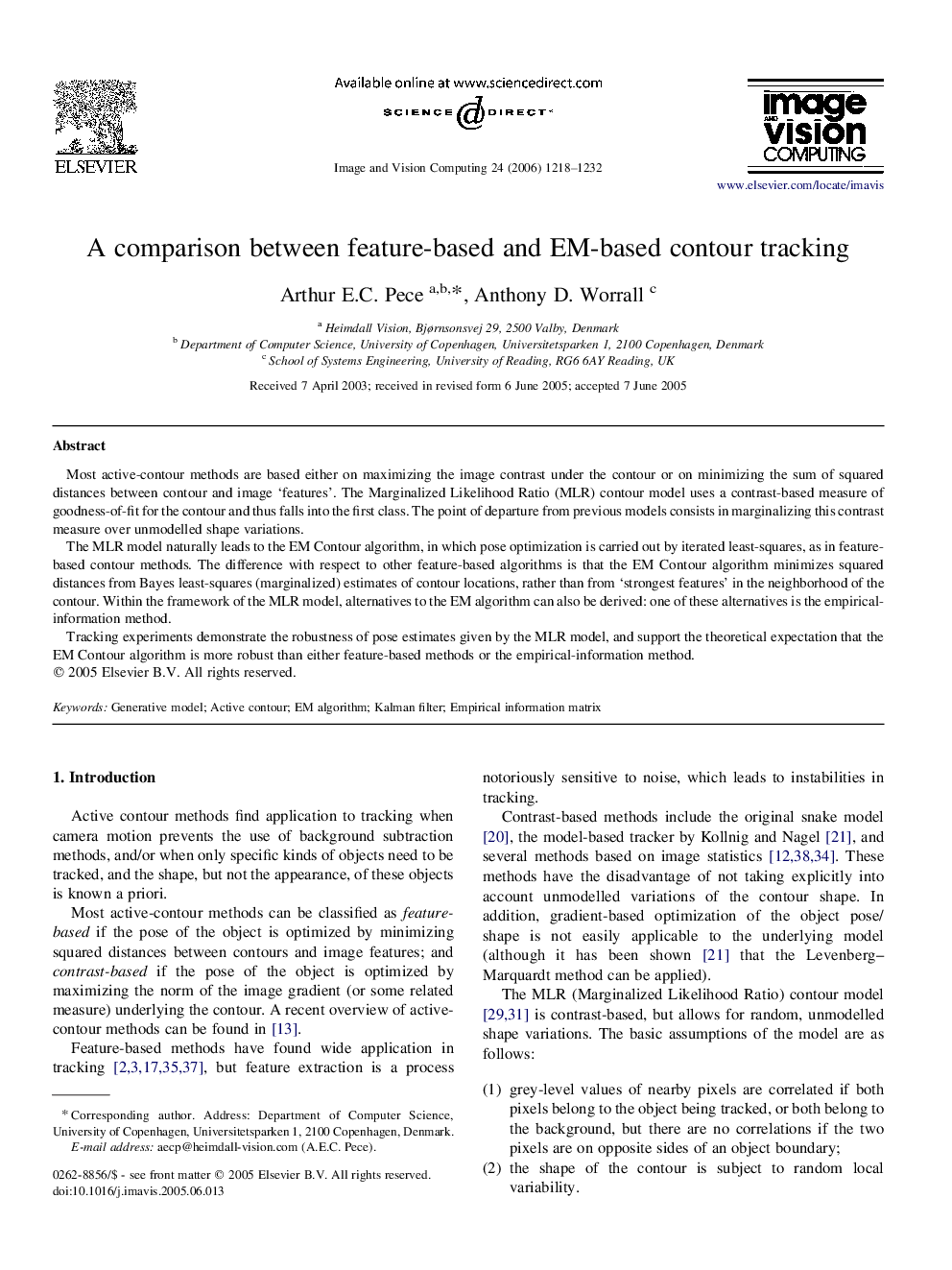| Article ID | Journal | Published Year | Pages | File Type |
|---|---|---|---|---|
| 529584 | Image and Vision Computing | 2006 | 15 Pages |
Most active-contour methods are based either on maximizing the image contrast under the contour or on minimizing the sum of squared distances between contour and image ‘features’. The Marginalized Likelihood Ratio (MLR) contour model uses a contrast-based measure of goodness-of-fit for the contour and thus falls into the first class. The point of departure from previous models consists in marginalizing this contrast measure over unmodelled shape variations.The MLR model naturally leads to the EM Contour algorithm, in which pose optimization is carried out by iterated least-squares, as in feature-based contour methods. The difference with respect to other feature-based algorithms is that the EM Contour algorithm minimizes squared distances from Bayes least-squares (marginalized) estimates of contour locations, rather than from ‘strongest features’ in the neighborhood of the contour. Within the framework of the MLR model, alternatives to the EM algorithm can also be derived: one of these alternatives is the empirical-information method.Tracking experiments demonstrate the robustness of pose estimates given by the MLR model, and support the theoretical expectation that the EM Contour algorithm is more robust than either feature-based methods or the empirical-information method.
